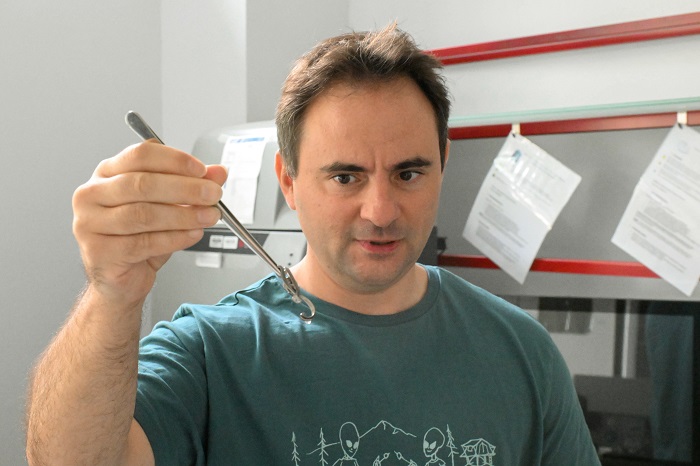
The invasive flatworm species (Amaga pseudobama) discovered in the USA has already appeared in at least three states, the journal PeerJ reports. A scientist from the University of Szczecin is a member of the team that made the discovery.
The research team was formed by French scientists from the National Museum of Natural History in Paris, Drexel University and North Carolina State University in the United States, James Cook University in Australia, and a researcher associated with the Polish university - Dr. Romain Gastineau, a DNA sequencing expert from the Institute of Marine and Environmental Sciences of the University of Szczecin.
'Nobody was interested in these types of animals for over 100 years, apart from a few invertebrate specialists. Now there is wide interest, also among people outside the scientific community, because they are invasive. Thanks to this, research on these flatworms has been developing (...) And thanks to this, we are discovering new species', Dr. Gastineau told PAP.
According to the researcher, these animals are invasive in Europe, America and on some remote islands, such as Martinique, Guadeloupe, Reunion, Tahiti. 'And in some of these places they are completely uncontrolled, because they do not have any natural enemies (predators) there', the scientist added.
Most of them come from Southeast Asia, Vietnam, Thailand, Indonesia; many come from Australia, New Zealand and Papua New Guinea.
As it turns out, they have a big impact on soil invertebrates, such as earthworms. 'The problem with them is that they are predators of soil invertebrates and mainly eat earthworms. And earthworms already have problems due to chemicals, for example (...) In some places, such as England and Scotland, it is quite a serious problem, because there are already 20 percent fewer earthworms because of this', Gastineau said.

Flatworms are invertebrates with a long, flattened body. Most flatworms are internal parasites of animals, including humans. The most well known flatworms are tapeworms - they can reach a length of up to several meters. Flatworms that are not parasites (such as planarians) live mainly in aquatic environments.
The new terrestrial species, first spotted in North Carolina in 2020, is a brown flatworm, a few centimetres long. Its special feature is that it closely resembles the Obama nungara, a predatory species native to Brazil and Argentina that has invaded much of Europe, devouring small snails, earthworms that loosen the soil, and other small animals.
The new worm has been named Amaga pseudobama in reference to this similarity. Contrary to appearances, the name has nothing to do with Barack Obama - in the South American Tupi language, the word oba means 'leaf' and ma means 'animal', which refers to the shape of the flatworm's body.
When the first photos of the worm appeared, scientists assumed it was the Obama nungara. Only after a molecular study, delayed due to the 2020 lockdowns, it became clear that the species was very different from Obama nungara. The scientists then conducted a detailed morphological analysis and molecular research, including a description of the complete mitochondrial genome, and described the species found in the United States under the name Amaga pseudobama to indicate its similarity to Obama nungara. Like Obama nungara, Amaga pseudobama is native to South America; however, it has never been observed or analysed there.
In addition to North Carolina, Amaga pseudobama occurs in Florida and Georgia, and may have invaded other states. There are several other invasive flatworm species known to have been discovered in the southern United States, including Platydemus manokwari.
The scientists point out that the similarity of Amaga pseudobama to Obama nungara will be an obstacle to understanding the species' distribution based on data provided by volunteers working with professional researchers (citizen science). Such cooperation is largely based on sending photos of encountered specimens. In this case, it is impossible to distinguish between the two species based on a photo.
Dr. Gastineau is a French scientist working at the Institute of Marine and Environmental Sciences of the University of Szczecin. He mainly conducts genomic research on microalgae and deals with the sequencing of mitochondrial genomes of invertebrates, in particular invasive terrestrial flatworms.
Find out more in the source article. (PAP)
Paweł Wernicki, Tomasz Maciejewski, Katarzyna Czechowicz
pmw/ tma/ kap/ bar/ mow/ kap/
tr. RL













